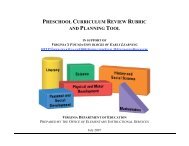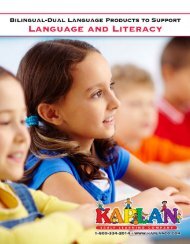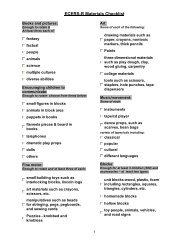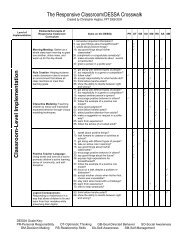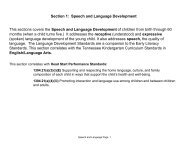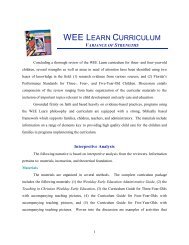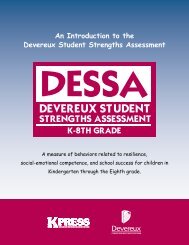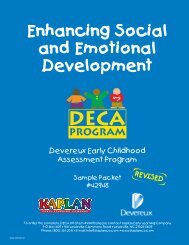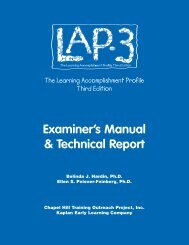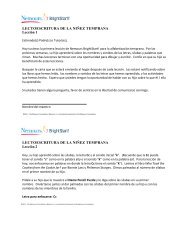Examiner's Manual & Technical Report - Kaplanco.com
Examiner's Manual & Technical Report - Kaplanco.com
Examiner's Manual & Technical Report - Kaplanco.com
- No tags were found...
You also want an ePaper? Increase the reach of your titles
YUMPU automatically turns print PDFs into web optimized ePapers that Google loves.
Overview of StudyChapter 5Methodology and Procedures for the LAP-DReliability and Validity StudyTo re-norm the LAP-D in English and establish norms in Spanish, a sample of 2099 childrenwere recruited to participate in the reliability and validity studies. Four types of studies wereconducted as described below.• Construct validity examines the extent to which an instrument functions as a coherentmeasure. Construct validity of the LAP-D was measured in four ways: 1) by examiningthe intercorrelations among different subscales of the LAP-D; 2) by determining theinternal consistency coefficients for the overall scale and for each subscale; 3) bycalculating the Standard Errors of Measurement for the overall scale and for eachsubscale by age group; and, 4) by examining the relations between chronological age anddevelopmental age for the overall scale and for each subscale. In addition, differentialitem functioning analyses were conducted for each item on the two versions of the LAP-D (English and Spanish) to determine whether any items were biased. Item-level<strong>com</strong>parisons of the scores for the two different versions were made, adjusting fordifferences in ability based on the scores on the criterion validity instruments.• Criterion Validity, also called concurrent validity, examines the correspondencebetween individual scores on an instrument with scores on a similar instrument. A sampleof children was administered both the LAP-D and one of two other norm-referencedinstruments (i.e., appropriate subscales from the Woodcock-Johnson Tests ofAchievement or the DIAL-3, a screening instrument) in two sessions in close proximity(1-3 weeks apart). Each child was administered both assessments in their primarylanguage only (English or Spanish). The children in this sample were representative of arange of age levels and included children with typical and atypical development, so thatcriterion validity could be examined overall as well as for these different groups. Theassociations between the scores on the two different measures, calculated separately foreach language group, were examined to determine whether children scored similarly onthe LAP-D and the criterion measure. In addition, <strong>com</strong>parisons of the pattern ofassociation for each language group were examined to determine if the patterns weresimilar.• Test-Retest Reliability indicates the extent to which scores on a measure are consistentfrom one time period to the next when administered by the same individual. Because theLAP-D measures a continuum of progressively more advanced developmental skills, thetest-retest reliability was measured over a short period of time so that any differencebetween administrations were more likely to reflect reliability rather than development.The LAP-D was administered and then re-administered by the same examiner in two41




